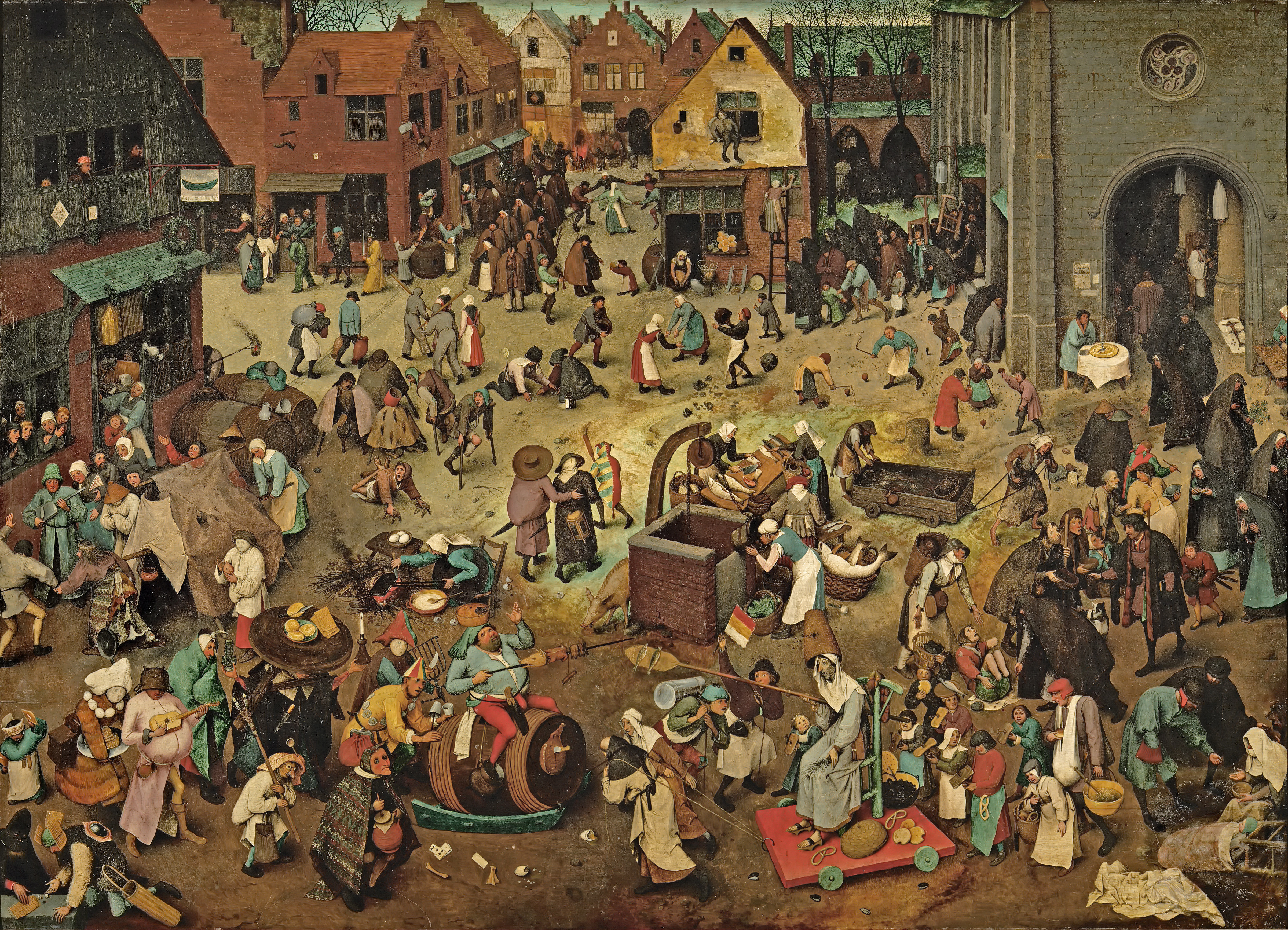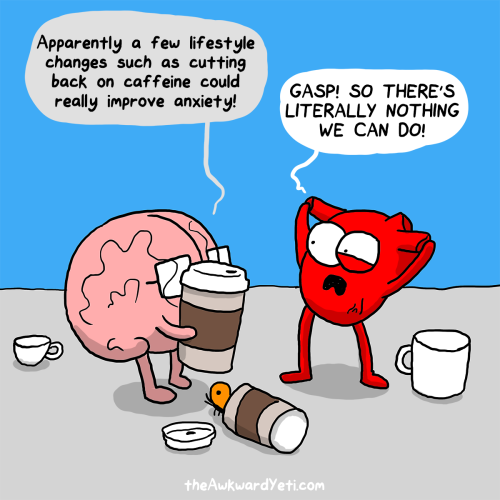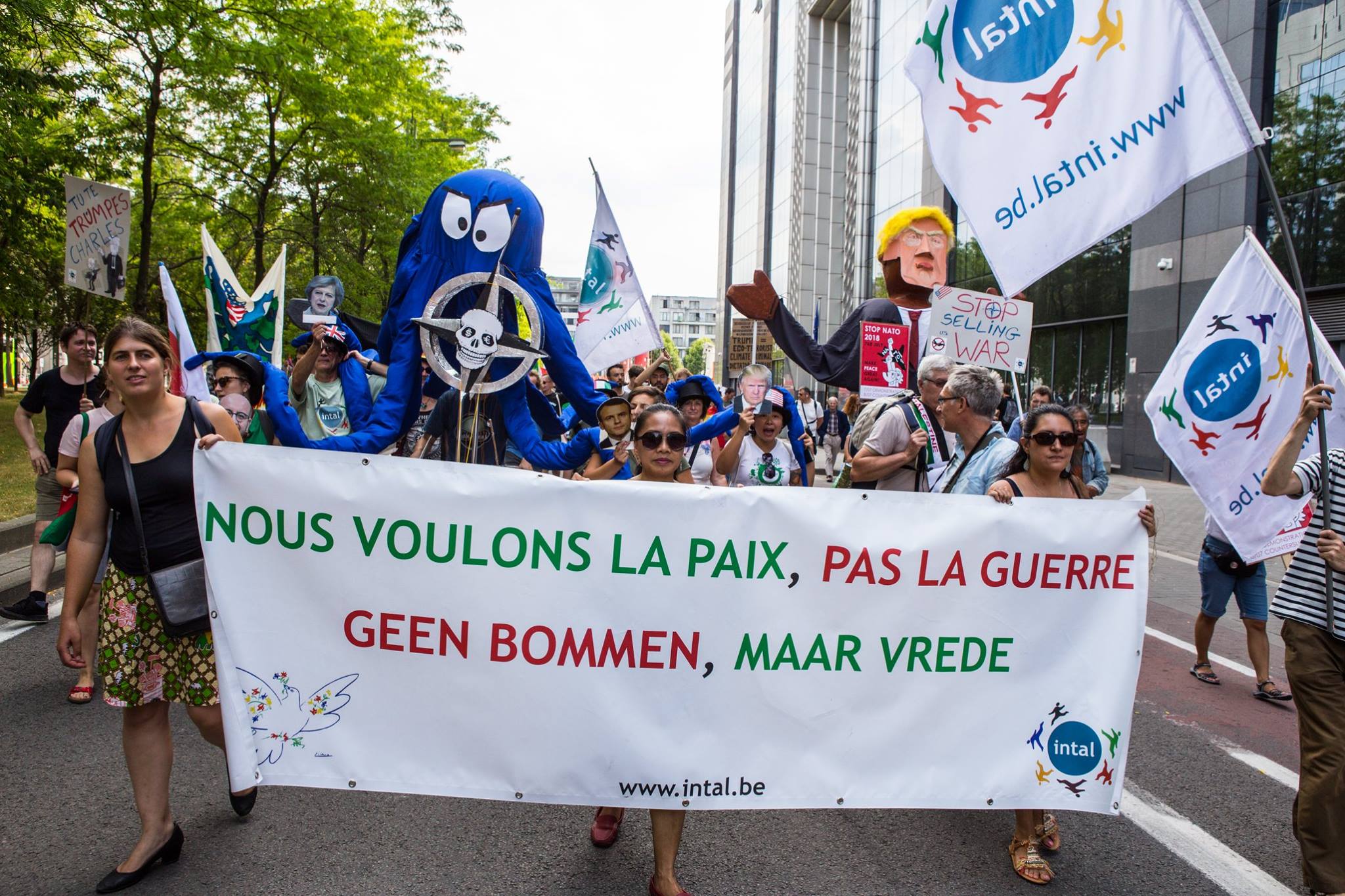Februari was een zeer rustige boekenaankoopmaand. Maar een enkele uitstap naar een van de gebruikelijke dealers. Ziekteverlof heeft zo zijn nadelen. Maar bon, niettemin enkel zeer interessante aanwinsten.
Jan Willem Stutje, De man die de weg wees. Leven en werk van Paul de Groot 1899 - 1989, de bezige bij, 2000.
René De Preter, Geld en Macht, EPO, 2006.
Helmut Gaus, Menselijk gedrag tijdens langdurige economische recessies (een schets), de sikkel, 1981.
E.P. Jozef Jennes, Invloed der Vlaamsche prentkunst in Indië, China en Japan tijdens de XVIe en XVIIe eeuw, Davidsfonds, 1943.
Robert Van Roosbroeck, Emigranten, Davidsfonds, 1968.
2.29.2016
2.28.2016
Turteltaks
Volgende maand, zijnde dus nu dinsdag, gaat de 'Turteltaks' in werking. Een simpele, schandalige extra belasting.
De PVDA organiseerde gisteren een 'pay back dag', een protestactie tegen deze Turteltaks.
Peter Mertens zei het volgende “Wij willen een duidelijk signaal geven: waarom moeten wij opdraaien voor de woekersubsidies aan commerciële zonnepanelenparken van multinationals als Katoen Natie? Elk gezin, elke alleenstaande, elke zelfstandige betaalt 100 euro Turteltaks, terwijl de dertig grootste multinationals buiten schot blijven. Is dat de ‘solidariteit’ waarover minister Turtelboom het heeft? Dat is onaanvaardbaar. Wij gaan door tot de Turteltaks is afgeschaft!”
PVDA laceerde ook haar alternatief, het PayBackPlan.
De drie maatregelen leveren samen 495 miljoen euro op, berekende de PVDA-studiedienst, precies evenveel als de Turteltaks moet opbrengen.
lees vooral zelf het PayBackPlan (pdf)
meer info ook hier: www.turteltaks.vlaanderen, samen met www.turteltaks.info, www.turteltaks.net, www.turteltaks.org en www.turteltaks.online.
De PVDA organiseerde gisteren een 'pay back dag', een protestactie tegen deze Turteltaks.
Peter Mertens zei het volgende “Wij willen een duidelijk signaal geven: waarom moeten wij opdraaien voor de woekersubsidies aan commerciële zonnepanelenparken van multinationals als Katoen Natie? Elk gezin, elke alleenstaande, elke zelfstandige betaalt 100 euro Turteltaks, terwijl de dertig grootste multinationals buiten schot blijven. Is dat de ‘solidariteit’ waarover minister Turtelboom het heeft? Dat is onaanvaardbaar. Wij gaan door tot de Turteltaks is afgeschaft!”
PVDA laceerde ook haar alternatief, het PayBackPlan.
- een zonneplantagetaks op commerciële zonneplantages zoals die van Fernand Huts en Jan De Nul. Die roomt onverantwoorde woekerwinsten af en brengt 115 miljoen euro op.
- investeringen in zonne-energie en windenergie. De PVDA stelt voor de geplande biomassacentrales te vervangen door windmolens op land, en door zonnepaneleninstallaties. Dat is duurzamer, ecologischer en goedkoper, en het brengt 186 miljoen euro.
- de nucleaire woekerwinsten van Electrabel moeten geïnvesteerd worden in groene stroom, in plaats van ze uit te keren aan aandeelhouders. Dat levert 194 miljoen euro op.
De drie maatregelen leveren samen 495 miljoen euro op, berekende de PVDA-studiedienst, precies evenveel als de Turteltaks moet opbrengen.
lees vooral zelf het PayBackPlan (pdf)
meer info ook hier: www.turteltaks.vlaanderen, samen met www.turteltaks.info, www.turteltaks.net, www.turteltaks.org en www.turteltaks.online.
Labels:
belastingen,
electrabel,
energie,
pvda,
Tom De Meester,
Turteltaks,
Vlaamse regering
2.25.2016
2.18.2016
Help, onze kerk loopt leeg
Kerken die leeglopen zorgen voor heel wat discussie. Bij onze noorderburen is de situatie wat schrijnender als bij ons, de kerken zijn daar immers private eigendom, het is te zeggen de zogenaamde kerkgenootschappen zijn eigenaar van de gebouwen en zij dragen ook alle kosten. Bij ons worden parochiekerken gefinancierd met publieke middelen en staan ze onder beheer van een openbaar bestuur, met de verwarrende naam kerkfabriek.
Deze week werd een handleiding voor kerkbestuurders voorgesteld. Samensteller is Duco Stadig, zelf lid van een kerkbestuur en oud-wethouder.
Liefhebbers kunnen de handleiding hier downloaden.
2.17.2016
2.16.2016
'Gaat Cuba de slechte kant op?'
Vanavond organiseert de solidariteitsorganisatie ICS een veelbelovende 'interactieve video-workshop' over relaties Cuba-VS:
Gaat Cuba de slechte kant op?
vanavond 16.02 om 20u
geheel en al gratis
Vredeshuis
Margrietstraat 9 Gent
2.15.2016
2.14.2016
2.13.2016
Versailles’ toerismeparadox
Op deze fraaie zaterdag een lezenswaardige analyse over de erfgoedsector en toerisme. Jacquelien Cannoo publiceerde deze analyse op het interessante Nederlandse platform 'Visies op Erfgoed & Ruimte' - VOER.
Toerisme en erfgoed zijn nauw aan elkaar verwant. Het lijkt soms alsof er pas een rij voor de ingang gevormd wordt zodra het label erfgoed op het gebouw of gebied is geplakt. Deze verwantschap heeft zijn positieve zijde: iedere persoon in de rij betaalt een ticket en koopt misschien een broodje in het restaurant dat speciaal naast het gebouw of in het park is geplaatst. Het is dus goed voor de lokale economie. Maar lokaal zijn er ook negatieve effecten en die zijn zowel voor de bewoners als voor de toerist merkbaar, zij kunnen dit als te commercieel ervaren. De grote groepen toeristen en deze commercialiteit verandert de erfgoedbeleving en dat kan schadelijk zijn voor het erfgoed en de authenticiteit ervan. Een voorbeeld zijn de tuinen van Versailles die in de zomer en in de winter een compleet andere beleving bieden. Beide belevingen heb ik ervaren.
In de winter, zeker met sneeuw, zijn de tuinen van Versailles een oase van rust. Door het kleine aantal bezoekers, lijkt het alsof je alleen door de gigantische tuinen rondloopt: Voor je de brede egaal witte laan met het zicht naar het paleis dat wit, vrij en open is. Het Grand Canal en de fonteinen zijn gedeeltelijk bevroren. Vanaf het paleis voert het zicht langs een as die typisch is voor Franse tuinen en die door de sneeuw oneindig lijkt. Er staat geen rij voor de ingang van het paleis, dus de verleiding om binnen op te warmen en het rijke interieur te bezichtigen is groot. Ook binnen is het niet druk en kunnen bezoekers zich goed voorstellen hoe men hier vroeger woonde en genoot van de tuin.
Hoe anders is het in de zomer. De bomen in de Tuinen van Versailles zijn dan wel prachtig volgroeid en groen, voetgangers moeten opletten dat ze niet aangereden worden door fietsers en golfkarretjes, die te huur zijn om grote afstanden af te leggen. De bestuurders genieten van al het moois dat het park te bieden heeft en de weg en het verkeer worden daarbij niet meer in de gaten gehouden.
De zichtas naar het paleis is gevuld met mensen. Zelfs op het Grand Canal varen toeristen in huurbootjes. Slechts het grote grasveld in het midden biedt enigszins vrij zicht. Hier staan bewakers om te voorkomen dat toeristen het gras op lopen. Een treintje op wielen, dat doet denken aan een pretpark treintje, scheert toeterend langs om een lange rij wachtende mensen te passeren.
De extreme tegenstelling tussen winter en zomer is bijzonder en ietwat lachwekkend, maar ook bedroevend: het magische van de winter was in de zomer nergens te herkennen. Het grote aantal mede-toeristen ontneemt de mogelijkheid tot verbeelding van vroegere tijden. Terwijl dit juist van belang is voor de authenticiteit van het erfgoed. Zonder de verbeelding voelt het in de zomer als een mooi en druk park met een bijzonder en historisch gebouw in het hart van de tuinen. In de winter wanen we ons in een paleistuin waar Koning Lodewijk rondwandelde, die langs het Grand Canal opkeek en zag dat hij nog een eind moest lopen voor hij zich binnen kon opwarmen bij de open haard.
Het is een paradox die voortkomt uit de moderne wereld, doordat een groeiend aantal mensen de mogelijkheid hebben om op reis te gaan. De culturele toeristen verwachten bij hun reizen de plaatselijke cultuur te kunnen meemaken. Iets wat John Urry de ‘Tourist Gaze’ noemt (de blik van toeristen). Plekken die representatief zijn voor de plaatselijke cultuur zullen veel bezocht worden door toeristen. De paradox ontstaat zodra de lokale bevolking doorheeft dat zo’n plek populair wordt. Zij zullen er economisch slim op inspelen door bijvoorbeeld rondleidingen, broodjes of treinritjes aan te bieden. En dat brengt de authentieke beleving van zo´n plek in gevaar. Dit is dus ook wat er gebeurt bij Versailles. Toeristen uit de hele wereld komen naar Versailles om een authentiek paleis te zien dat een belangrijk onderdeel is van de Franse cultuur. Er komen zoveel bezoekers op af dat er veel geld aan te verdienen is: de verkoop van entree tickets voor het paleis, voedsel en de verhuur van vervoermiddelen zorgen voor hoge inkomsten. Vaak zal het erfgoed lijden onder de mensenmassa, bij Versailles en andere populaire erfgoederen lijdt voornamelijk de erfgoedbeleving eronder doordat de bezoekers een toeristische trekpleister beleven en niet de kwaliteiten die het paleis en zijn tuinen in zich heeft.
Versailles zullen we natuurlijk nooit ervaren zoals vroeger, maar de erfgoedbeleving zou wel verbeterd kunnen worden. Bijvoorbeeld door het toeristenaantal te verminderen, iets dat wellicht vanzelf zal gebeuren wanneer de paradox van de Tourist Gaze in Versailles doorzet en de meerderheid van de bezoekers het niet meer prettig zullen vinden om het park in het hoogseizoen te bezoeken. Het zou beter voor het park en het paleis zijn om dit voor te zijn, zodat er geen inkomsten worden misgelopen. Spreiding zou een oplossing kunnen zijn, bijvoorbeeld door het erfgoed aantrekkelijk te maken in het laagseizoen. Maar ook het spreiden van de bezoekers door het gehele park zou een oplossing kunnen zijn. Veel toeristen concentreren zich namelijk vooral rondom de paleizen, waardoor de rest van het park erg rustig is. Toch zal uiteindelijk het vinden van de meest authentieke ervaring een uitdaging zijn en blijven in erfgoed.
link: platformvoer
Labels:
erfgoed,
Jacquelien Cannoo,
toerisme,
Versailles,
VOER
2.12.2016
water in Brusselse musea
Er zijn zo van die nieuwsberichten waar je stijl van achterover valt.
Akkoord er zijn er wel bijzonder veel de laatste tijd. Maar geef nu toe, prestigieuze musea met daarin parels van ons erfgoed waar er blijkbaar geen geld is om het dak te repareren.
Dat hou je toch niet voor mogelijk.
Met de sneeuwval, het stormweer en overvloedige regen van de voorbije weken kampten zowel de Koninklijke Musea voor Schone Kunsten op de Brusselse Kunstberg als het Koninklijk Museum voor Kunst en Geschiedenis in het Jubelpark met binnensijpelend water in de tentoonstellingszalen. In beide federale musea is het niet de eerste maal dat tentoonstellingen door de slechte staat van de daken letterlijk 'in het water vallen'.
In de Koninklijke Musea voor Schone Kunsten werden vorige week zestien werken uit de vleugel voor Oude Kunst preventief weggehaald omwille van waterinsijpeling. De schilderijen kwamen gelukkig niet in contact met vocht. Het water drong de museumzalen binnen via de oude metalen lichtkoepels. De technische ploeg van het museum en de Regie der Gebouwen bekijken of de koepels voorlopig hersteld kunnen worden, maar vermoedelijk moeten ze op termijn vervangen worden. Ook het oude, zinken dak van het museum is op termijn wellicht aan vernieuwing toe. De Koninklijke Musea voor Schone Kunsten hebben niet voor het eerst te kampen met een waterlek. In 2013 moest de prestigieuze Rogier van der Weyden-tentoonstelling om dezelfde reden ook al voortijdig sluiten.
Ook het Koninklijk Museum voor Kunst en Geschiedenis in het Jubelpark kampt al langer met binnensijpelend water. Het museum moest de afgelopen jaren door waterschade al verschillende zalen voor het publiek sluiten. De renovatieplannen liggen klaar, maar lopen vertraging op. Het Fonds InBev-Baillet Latour beloofde al anderhalf miljoen euro voor de inrichting van een nieuwe zaal met twintigste-eeuwse Belgische kunst, maar de herstelling van het dak door de Regie der Gebouwen laat op zich wachten. Het museum dreigt door de aanhoudende problemen bovendien overheidsgeld mis te lopen. Het kreeg een eenmalige subsidie van 500.000 euro, maar moet die binnen een jaar spenderen. En zolang het dak lekt, kan dat niet.
bron: FARO
Labels:
Brussel,
cultuurbeleid,
erfgoed,
Jubelparkmuseum,
KMSK,
regering
2.10.2016
Aswoensdag - het Gevecht tussen Carnaval en Vasten
Op deze Aswoensdag brengen we een prachtig schilderij van Pieter Bruegel de Oudere.
In diens typische stijl krijgen we een fantastische wirwar van figuren, met allerlei intrigerende verwijzingen.
In diens typische stijl krijgen we een fantastische wirwar van figuren, met allerlei intrigerende verwijzingen.
Labels:
aswoensdag,
Bruegel,
carnaval,
kunst,
schilderij,
vasten
2.09.2016
carnaval!
kameraden en vrienden, het is wederom carnavalstijd!

Speciaal voor deze gelegenheid brengen we een passend werk van de compleet geniale Duitse expressionistische kunstenaar Kirchner.

Speciaal voor deze gelegenheid brengen we een passend werk van de compleet geniale Duitse expressionistische kunstenaar Kirchner.
Labels:
carnaval,
expressionisme,
Kirchner,
kunst,
schilderij
2.08.2016
dr. Deepa Kumar over Islamofobie in de VS
Maandag is nog steeds filmpjesdag op deze blog. Vandaag een interview met dr. Deepa Kumar. Zij is prof. media studies aan Rutger University en auteur van 'Islamophobia and the Politics of Empire'.
Empire Files op Telesur brengt een interview van Abby Martin met dr. Deepa Kumar over islamofobie en over het toenemend aantal racistische aanvallen in de VS.
Zeer bekijkenswaardig.
Op de vraag of islamofobie wel racisme kan zijn omdat 'islam' geen 'ras' is, stelt ze moslims en mensen die 'lijken op moslims' ervaren racisme en discriminatie en dus is islamofobie wel degelijk racisme.
Telesur is een volgenswaardige zender, in Spaans of Engels - like The Empire Files zeker ook.
Empire Files op Telesur brengt een interview van Abby Martin met dr. Deepa Kumar over islamofobie en over het toenemend aantal racistische aanvallen in de VS.
Zeer bekijkenswaardig.
Op de vraag of islamofobie wel racisme kan zijn omdat 'islam' geen 'ras' is, stelt ze moslims en mensen die 'lijken op moslims' ervaren racisme en discriminatie en dus is islamofobie wel degelijk racisme.
Telesur is een volgenswaardige zender, in Spaans of Engels - like The Empire Files zeker ook.
Labels:
Abby Martin,
Deepa Kumar,
documentaire,
islamofobie,
racisme,
Telesur,
The Empire Files,
video
2.07.2016
'Must hipsters die?'
Onder de provocatieve titel 'Must hipsters die? Class and the middle-class metropolis' brengt Salvage een interessante bijdrage aan de discussie over gentrificatie.
Society as a whole is more and more dividing into two hostile camps, into two classes directly facing each other — the rentier and the renter. Three decades of neoliberalism has transformed simple property ownership, housing in particular, into a primary variable of material status. Yet as severe as this objective distinction has become, the spectre haunting the capital today is not one of class conflict but the spectre of flat-whites and Aperol Spritz.The growth of service sector employment accompanying London’s rentier economy draws subjects from the non-propertied classes into the cultural orbit of middle-class distinction. Miscomprehension as to the meanings of an expanding middle-class habitus has been one factor inhibiting a response to gentrification that accurately corresponds with London’s contemporary class reality. To be a hipster is not simply to be middle-class in the objective, property owning sense – in fact, adopting aspects of middle-class taste can be a prerequisite for employment in London’s service sectors.Responses to gentrification are needed which eclipse a cultural relativist understanding of class; not because quotidian reality has no bearing on politics, but because it does. Here I plot the development of conditions which have enabled current levels of rent seeking before theorising the typical consciousness of those employed in London’s related affective industries. In doing so I outline the necessity by which working-class subjects are familiarised with middle-class taste, often to the point of subjective endowment. Simple cultural responses to gentrification which target signifiers of middle-class taste therefore split those affective labourers from their objective allies among others in the non-propertied classes, placing them instead in defence of cultural interests which form the basis of a hegemonic bond with the landed consumer classes.RentThe total number of private renters has grown 30 per cent in the past five years; particularly affected are a younger generation who, despite record low borrowing costs are denied progression to the status of owner occupation. The cost of rent eats into an ever increasing amount of earnings. Last year the average cost of rent rose 10.7 per cent, compared to the 2.4 per cent increase in tenant’s incomes. The 2014 English Housing Survey showed that private sector rents take up 40 per cent of tenants’ gross income, while Shelter in 2013 found that in London private rents account for more than 50% of a family’s monthly earnings in 23 out of the capital’s 33 boroughs.Data from the Ministry of Justice showed that 42,000 homes were repossessed by landlords in England and Wales during 2014, a rate of 115 a day. This was the highest figure since the records began in 2000, and came as the number of mortgage borrowers having their homes repossessed fell to its lowest level in eight years, a trend likely continue for as long as interest rates remain fixed close to zero.The development of this crisis (a class crisis, rather than the benign ‘housing’ one) is traced back to the dismantling of the social democracy which had previously delimited the power of industrial capital. Today, a national accumulation model dependent upon rising asset prices combined with increased juridical and state privileges, form the outlines of the rentier class’ power.Since the neoliberal revolution, the British economy has been awash with hyper-mobile money exhibiting a declining preference for direct investment in manufacturing. The process of financial liberalisation leading up to the 2008 crash has been compounded by the response of governments to the crisis; the primary aim of reviving banks’ with supplies of cheap money has encouraged the pre-crash trend of speculative asset investment. Cheap liquidity and greater perceptions of risk has meant that incentives for short-term speculative investment have never been so great. As such metropolitan house and land prices continue to climb (10 to 15 per cent annually in the south east), much to the general merriment of the rentier class.The ascendency of Landlordism has been aided by the introduction of assured shorthold tenancy (AST) contracts in 1988 has meant that private tenants have no rights when it comes to staying beyond their fixed term of most often 6 to 12 months, making AST contracts the most precarious in Europe. While the political power of this class can be attested to by the fact that 70 percent of the £1.9bn increase in the housing benefit bill goes to private landlords, as does the majority of the £1.88bn spent by local councils on poor quality temporary and emergency accommodation for homelessness applicants.LabourFor the propertied, simple ownership provides access to liquidity via rent, sale or credit as well as a limit from the rent burden, forming the basis for lives of consumerist leisure. While in terms of the propertyless, the need for wages draws many towards the production of cultural desires that primarily serve London’s liquid middle-classes.London’s service sectors account for 85 per cent of all private sector employment in the capital, even when discounting financial services the figure is more than half of all private sector employment. Accurate research is lacking as to the exact volume of workers in these sectors (combining hotels, restaurants, public relations, retail, fashion, etc) and as yet very few empirical accounts have been made of these worker’s consciousness; however to an extent theorisation as to latter can be reasonably formulated a priori. First, we can recognise that in so far as employment concerns a cultural product (an atmosphere, a meal or an outfit, for example) work in London’s expanding service industries will necessarily require knowledge of that product, a knowledge shared, however unequally, between producer and consumer. Second, that a sense of taste is notoriously hard to imitate. As such, given a competitive labour market, the sense of taste necessary for such employment is likely obtained by means of subjective enjoyment — such is the distinction between service work that mimics the master’s desires and that which grasps, indeed is, the real thing.Enjoyment is the epistemology necessary to the functioning of the rentier’s middle-class metropolis, and hipster is one of this economy’s ideal typical workers. Hipsterism is, in part, a process that imbricates working-class subjects not only in the service of the tastes of London’s solvent classes but in the affective enjoyment of that cultural production.TasteThe problem that the analysis of taste poses for objective categories of class —defined by the property distinction— is magnified when one sees that the summits of contemporary middle-class culture have been assembled by means of journeys which depart from positions either side of the property divide.It was relatively recently and by indirect means that many of London’s new rentiers acquired such status; Thatcher’s right to buy offered one avenue for property ownership while the sudden acceleration in house prices afforded liquidity. The political inclinations of this group can be traced to this lack of direct class-struggle accompanying its ascendence. While Blairism is this trend’s major political corollary, also culturally the tastes of London’s contemporary rentiers fails to resemble those of the class’ historic precedents. Gastronomically speaking, esoteric French influence is still found in Mayfair, however as the loci of rent-seeking has spread beyond these old quarters the city’s contemporary beneficiaries have sought new practices, partially through reformulating practices historically belonging to London’s working-class and migrant traditions.Entering it’s twenty-first year, Fergus Henderson’s St.John perhaps defines the modern era of British cuisine and provides an early indicator as to the combined nature of the palate which hailed the current tastes of London’s nouveau-middle-class. It is St. John’s (smoked) salt of the (organic) earth concerns and the appearance of some form of wax-jacket clad modesty that appeals to London’s middle-classes, old and new.For this class contemporary humanist pretensions avoid the tenets of aristocratic sadism, rendering its consumer habits mobile and pervasive, its borders porous to alternative sources of vitality and its gestures combined with by-gone memories of working class culture. At St John’s the slogan ‘nose-to-tail eating’ dictates puritanical dishes composed largely of entrails and turnips. On the menu, among the steaming bowls of tripe, smoked eels and roasted marrow bones — all takes on historic working-class cuisine — is also deep fried squirrel, a slow-food adjustment to the contemporary subaltern taste for chicken and chips.The Politics of Pie and MashThe response to gentrification on the part of some class activists has shown a failure to recognise contemporary middle-class taste as a historically combined phenomena, born out of the cultural compatibility of two objectively opposed classes. Instead, these activists interpret metropolitan consumption patterns solely in terms of a war of commodification between two fixed groups, those of the working-class and those of middle-class outsiders.Back in October the Tower Hamlets based anarchist group, Class War, protested outside the already notorious ‘Cereal Killers’ cafe on Brick Lane. The hipster cafe trades on over-priced sugary breakfast, flavoured milk and nostalgia for American pop-culture in a borough which, as many pointed out, is one of London’s least white and one of the UK’s poorest. Class War’s ‘Fuck Parade’ was accompanied by a statement which laid the blame for social cleansing on rich non-British outsiders. During the protest, as amongst similar events in recent memory (for example ‘Yuppies Out’ in Brixton), symbols of authentic working-class taste were opposed to those of the gentrifiers. One Fuck-Parader, for example, turned up with a box of Tesco Value corn flakes to wave at Brick Lane’s cereal killers.Should the fulcrum of anti-gentrification be an object of authentic working-class culture — the holy-grail of working-class reaction — pie and mash might of been as good a culinary example as any. With listed status, one of the London’s few remaining pie and mash shops in Walthamstow now stands as living testament to the city’s industrialised past where a taste for pastry grew out of the need to protect food from the smog and dust that blew Westwards from city’s industrial East End. As with fish and chips, another proud culinary tradition (of jewish origin), pie and mash (Italian), was a cheap source of the calories required for physical labour in London’s industrial and mercantile economy.Departing from the sociological determinism of class under industrial capitalism, the temptation for some has been to fall back on largely reconstructed cultural determinants, from where one slides easily into xenophobia. Proletarians, as the historic bearers of ideal political subjectivity, have disappeared from all but a few leftist’s fantasies; here they must leave also – the sooner, the better.Salvaging a class analysis useful to the politics of this century requires reformulating sociology from its objective lines of enquiry to the development of research in terms of consciousness. As Marx and Engels moved in analysis from necessary labour time to the factory discipline that was the distinct character of the proletarian subject, so must we move from an analysis of rent to affective labour.As long as the renewal of economic disaster remains unforthcoming middle-class preoccupations will continue to expand. Yet resistance to gentrification articulated in terms of cultural relativism shows an inability to grasp the affective nature of work in the middle-class metropolis. Any authentic subjects ‘outside’ of this process (whether or not such autonomy has ever existed) has in many quarters been disorientated and evicted or else integration with the rentier economy by means of the right to buy and service sector employment.While directly resisting evictions and social disorganisation as it occurs, any broader political project must aim at the objective interests of London’s rentier class as an expression of a decaying growth model premised upon asset inflation. If it is true that in the middle-class metropolis renters’ and workers’ objective enemies can appear as their natural allies, the left’s response to gentrification must be to abandon the relativist politics of pie and mash.
Labels:
gentrificatie,
hipster,
huizenmarkt,
sociaal beleid
2.05.2016
2.04.2016
2.03.2016
'zoek iets waar je als kerk mee kunt scoren'
Vandaag brengen we een interessante tekst uit Nederland, van de organisatie Toekomst Religieus Erfgoed. Maar het is, me dunkt, ook voor hier toepasbaar. Hoe kom je als kerk bovenaan de stapel?
De truc om boven op de stapel van een monumentenfonds, instantie of particulier investeerder terecht te komen, is je kerkgebouw in de schijnwerpers te zetten. Charlotte Bonga, actief in de restauratiecommissie van de Sint Willibrorduskerk te Vierakker, legt uit: “Ons devies was en is: haal alles uit de kast wat je kunt bedenken om jouw kerk onderscheidend te laten zijn.”
Tussen 2000 en 2009 werd de negentiende-eeuwse neogotische hallenkerk in het Gelderse dorp aan zowel de buiten- als binnenzijde grondig gerenoveerd. De totale kosten voor deze renovatie bedroegen ruim twee miljoen euro. Met een geloofsgemeenschap van zo’n 450 parochianen en een inwonerstal van om en nabij de 1.200 dorpelingen, had Vierakker niet genoeg aan de giften en inzamelingsacties van de dorpsgemeenschap om een dergelijk bedrag op te halen. De financiering kwam uiteindelijk rond met behulp van een overheidssubsidie en diverse fondsen, waaronder het Prins Bernhard Cultuurfonds en het VSB-fonds. Ook besteedde provincie Gelderland zogeheten NUON-gelden aan de renovatie. De inspanning van de Vierakkers werd beloond. In 2004 is de restauratie bekroond met de Europese Bernhard Remmersprijs, ook wel bekend als de ‘Oscar in de monumentenzorg’.
In Vierakker bestond het recept voor een geslaagde renovatie uit het enthousiasmeren en mobiliseren van zowel de plaatselijke dorpsgemeenschap als mogelijke financiers. Door enthousiast en positief blijven, ook als het tegenzit. Door alles uit het kerkgebouw te halen wat er in zit. En ten slotte door het opzoeken van de publiciteit, openheid van zaken te geven en iedereen bij het proces en bij het kerkgebouw te (blijven) betrekken. Zo organiseert de Willibrorduskerk openstellingen om iedereen toegang te kunnen verlenen tot het kerkgebouw. 'Geld wordt immers niet gestopt in iets wat voor het merendeel van de bevolking verborgen blijft', zo redeneert Bonga.
Wat betreft unieke kwaliteiten had de Willibrorduskerk het vrij gemakkelijk. Het prachtige interieur, de kleurrijke schilderingen en de ligging in het natuurrijke landgoed Suideras zijn belangrijke selling points van het kerkgebouw. Een waarderapport van de Stichting Kerkelijk Kunstbezit omschrijft het interieur zelfs als ‘het best bewaarde authentieke interieur van een dorpskerk uit die tijd’. 'Een kerk die je omarmt als je binnenkomt', aldus Bonga.
Ook plattelandskerken die wellicht niet op deze uitgesproken wijze bekend staan om hun monumentaliteit kunnen kijken naar wat de betreffende kerk bijzonder maakt. Misschien is dat wel de binding met het dorp, de unieke ontstaansgeschiedenis van het kerkgebouw of wellicht de praktische gebruiksmogelijkheden van de ruimte of de ligging van de kerk. Met andere woorden, zoek iets waar je mee kunt scoren, of het nu om restaureren of herbestemmen gaat.
Labels:
erfgoed,
herbestemming,
kerk,
monumentenzorg,
religieus erfgoed,
restauratie
2.02.2016
het gras is groener,...
Aan het begin van een nieuwe werkweek, tijd voor een 'motiverende slogan'. Een genre dat vooral door de sociale media verschrikkelijk, zelf irritant, populair blijft. Maar bon, vandaag toch een bijzonder leuke.
bron: http://youcantbeserious.com.au
2.01.2016
geschiedenis als bevrijding van de tirannie van het heden
Kameraden en vrienden, maandag filmpjesdag.
een leuk stukje uit een VPRO documentaire van een tijdje terug. Brits historicus Simon Schama geeft er zijn visie op geschiedenis en vooral de noodzaak ervan.
een leuk stukje uit een VPRO documentaire van een tijdje terug. Brits historicus Simon Schama geeft er zijn visie op geschiedenis en vooral de noodzaak ervan.
Labels:
documentaire,
geschiedenis,
historicus,
historiografie,
Schama,
video
Abonneren op:
Posts (Atom)

















